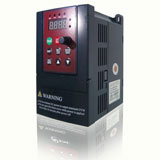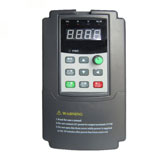Micro inverter solutions
Micro inverter solutions typically have less wiring because there are no junction or combiner boxes. For ACPV solutions (panel-vendor integrated micro inverters), there may not even be grounding wires (other than for the metal components of the racking, depending on the AHJ). There are no DC arc fault requirements, because there is no DC. Most microinverter solutions on the market use PLC communications, instead of either RS-232 or RS-485 (SMA products).
Incremental installation and upgrade. ACPV solutions can be installed to meet current needs or budget.
Multiple array facets. ACPV solutions can be installed in areas where a single array plane cannot be established.
Resistant to panel obsolescence. Damage or defective panels can be replaced without affecting string performance should a panel vendor cease manufacturing compatible panels. In an ACPV solution, individual modules can be replaced without affecting overall system performance.
Heat tolerance. Localized hot-spots can reduce string current (-dI/dT), affecting all panels in the string, including panels which aren't above average temperature. In an ACPV system, only the hot panels suffer.
Cold tolerance. Maximum string voltage is not limited by record low temperature requirements. This is important in regions with large temperature swings between winter and summer.
Increased design flexibility. String inverter system designs require more uniform panel characteristics, with little or no room for variations in panel shape or size, due to different characteristics for different panels with different cell counts. ACPV modules produce AC system power, regardless of panel geometry or cell count. (As an aside, I expect ACPV panel vendors to start re-considering non-standard panel shapes as a way to capture more architecturally-inspired designs.)
Distribution of power production. This isn't the "power is distributed across the array" that is commonly cited, but the ability to distribute the system components across larger areas. Panels can be deployed where space is available without regard to DC voltage drop.
Smaller possible system sizes. The minimum possible ACPV system is a single panel, allowing ACPV to be deployed anywhere.
Better TOU characteristics. Additional ACPV modules can be deployed having orientations which produce peak power when the system owner has peak consumption, potentially reducing TOU surcharges.
Better line-to-line balancing. Smaller string inverters, such as the SB1800, tend to be available only in 120-ish (I assume SMA's smaller inverters can cope with 127 volt systems in Mexico) voltages. For 120/240 split single phase systems, there is no line-to-line imbalance since ACPV solutions produce 240 volt power in a single phase deployment.
Incremental installation and upgrade. ACPV solutions can be installed to meet current needs or budget.
Multiple array facets. ACPV solutions can be installed in areas where a single array plane cannot be established.
Resistant to panel obsolescence. Damage or defective panels can be replaced without affecting string performance should a panel vendor cease manufacturing compatible panels. In an ACPV solution, individual modules can be replaced without affecting overall system performance.
Heat tolerance. Localized hot-spots can reduce string current (-dI/dT), affecting all panels in the string, including panels which aren't above average temperature. In an ACPV system, only the hot panels suffer.
Cold tolerance. Maximum string voltage is not limited by record low temperature requirements. This is important in regions with large temperature swings between winter and summer.
Increased design flexibility. String inverter system designs require more uniform panel characteristics, with little or no room for variations in panel shape or size, due to different characteristics for different panels with different cell counts. ACPV modules produce AC system power, regardless of panel geometry or cell count. (As an aside, I expect ACPV panel vendors to start re-considering non-standard panel shapes as a way to capture more architecturally-inspired designs.)
Distribution of power production. This isn't the "power is distributed across the array" that is commonly cited, but the ability to distribute the system components across larger areas. Panels can be deployed where space is available without regard to DC voltage drop.
Smaller possible system sizes. The minimum possible ACPV system is a single panel, allowing ACPV to be deployed anywhere.
Better TOU characteristics. Additional ACPV modules can be deployed having orientations which produce peak power when the system owner has peak consumption, potentially reducing TOU surcharges.
Better line-to-line balancing. Smaller string inverters, such as the SB1800, tend to be available only in 120-ish (I assume SMA's smaller inverters can cope with 127 volt systems in Mexico) voltages. For 120/240 split single phase systems, there is no line-to-line imbalance since ACPV solutions produce 240 volt power in a single phase deployment.

 High quality frequency inverters for electric motor speed controls in energy-saving solutions.
High quality frequency inverters for electric motor speed controls in energy-saving solutions.

